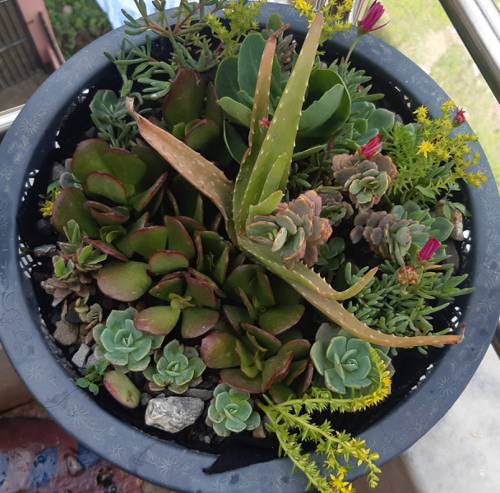
FAQ About Preventing Soil Erosion in Indoor Plant Setup

What is soil erosion in indoor plant setup?
Soil erosion in an indoor plant setup refers to the displacement of soil particles, primarily due to watering practices that can wash away the soil from the pot. This can lead to reduced soil volume, loss of nutrients, and unstable conditions for plant roots.

Why is it important to prevent soil erosion in indoor plants?
Preventing soil erosion is crucial for maintaining stable growth conditions in indoor plants. Erosion can lead to loss of essential nutrients and soil structure, which are vital for plant health. Additionally, preventing erosion minimizes mess and protects indoor surfaces from being stained by displaced soil.

How does overwatering contribute to soil erosion in pots?
Overwatering can cause soil erosion by creating excessive runoff that washes soil particles out of the pot. This happens because excess water not only loosens the soil structure but also carries it away with the flow, especially if the pot lacks proper drainage mechanisms.

What types of drainage systems help prevent soil erosion in potted plants?
Adequate drainage systems such as pots with properly sized holes at the bottom can greatly help prevent soil erosion. Using layers of gravel or stones at the bottom before adding soil also aids in reducing soil displacement by allowing water to pass while keeping the soil intact.

How can selecting the right potting mix prevent soil erosion?
Selecting a potting mix with good structure, such as one containing components like perlite, vermiculite, or coconut coir, can prevent soil erosion. These materials help retain necessary moisture while allowing excess water to drain away, thus minimizing erosion risks.

Are organic mulches effective in preventing soil erosion for indoor plants?
Yes, organic mulches such as bark, wood chips, or cocoa hulls can effectively prevent soil erosion in indoor plants by covering the soil surface. This coverage helps absorb the impact of watering, reducing runoff and protecting the soil structure underneath.

Can the placement of indoor plants affect soil erosion?
The placement of indoor plants can indirectly affect soil erosion. For instance, placing pots on uneven surfaces can lead to accelerated runoff during watering. Ensuring plants are placed on flat, stable surfaces helps prevent unnecessary soil displacement.

How often should I water my indoor plants to prevent soil erosion?
The frequency of watering depends on the type of plant, soil, and environmental conditions. To prevent soil erosion, it is important to water deeply but infrequently, allowing the soil to absorb moisture without creating excessive runoff. Balancing these factors can help maintain soil stability.

Should I consider using landscape fabric within pots to prevent erosion?
Using landscape fabric can be useful in preventing soil erosion within pots by acting as a barrier that holds the soil in place while allowing water to pass through. This can be particularly helpful in pots with frequent water flow issues, ensuring stability within the soil structure.

What role do plant roots play in preventing soil erosion in containers?
Plant roots are essential in preventing soil erosion as they anchor the soil, creating a network that holds soil particles together. Well-developed root systems reduce the likelihood of soil displacement during watering and contribute to the overall stability of soil in the pot.

Can using larger pots help in preventing soil erosion?
Using larger pots can help reduce soil erosion by providing more soil volume that acts as a buffer against displacement. Larger pots often facilitate better drainage and reduce the flow of water that could wash soil away, making them a good option for plants vulnerable to erosion.

How does the timing of watering affect soil erosion in indoor plants?
The timing of watering can affect soil erosion, as watering during periods of ample natural light can aid in quicker soil absorption and evaporation. This reduces the likelihood of soil staying waterlogged and helps maintain soil stability within the pot.

Is it beneficial to compact the soil in pots to avoid erosion?
While compacting the soil might seem like a solution to prevent erosion, it is generally not advisable. Overly compact soil can hinder water drainage and root growth. Instead, aim for a well-aerated potting mix that supports both water flow and plant health.

Can planting ground covers in pots reduce soil erosion?
Planting ground covers in pots alongside primary plants can be advantageous in reducing soil erosion. Ground covers form an additional layer, protecting the soil from direct water impact and helping bind the soil particles together, thus minimizing erosion.

How can decorative items in pots help prevent soil erosion?
Decorative items like rocks or pebbles placed on the soil surface can help prevent erosion by breaking the force of water as it hits the soil, thus reducing soil displacement. These items also act as a mulch, helping to retain moisture and protect the soil underneath.

Are there certain plants more susceptible to soil erosion?
Plants with shallow root systems are generally more susceptible to soil erosion as they provide less anchorage for the soil. It is helpful to pair such plants with supportive soil structures or companions that can bolster root presence in the soil mix.

How does soil pH affect soil erosion in potted plants?
Soil pH can impact soil structure and its resistance to erosion. Soils that are too acidic or too alkaline may lose structure integrity, leading to erosion. Maintaining a balanced pH ensures healthy soil texture and cohesion, reducing the risk of displacement.

What is the impact of indoor climate on soil erosion for potted plants?
Indoor climate, including humidity and temperature, can affect soil moisture levels and influence erosion rates. For example, dry indoor conditions can lead to quicker soil drying and shrinking, increasing erosion risk. Balancing the indoor climate helps maintain suitable soil conditions.

How can regular plant maintenance prevent soil erosion?
Regular plant maintenance such as trimming and repotting can prevent soil erosion by promoting healthy plant growth and root expansion. A healthy root system contributes to soil stabilization, while repotting adjusts soil levels that may have been depleted due to erosion.

What are some simple DIY solutions to prevent soil erosion in plant pots?
Simple DIY solutions include adding a layer of small pebbles on the soil surface or creating a potting mix with added organic materials to improve water retention. Additionally, employing careful and controlled watering practices greatly aids in minimizing soil erosion.
